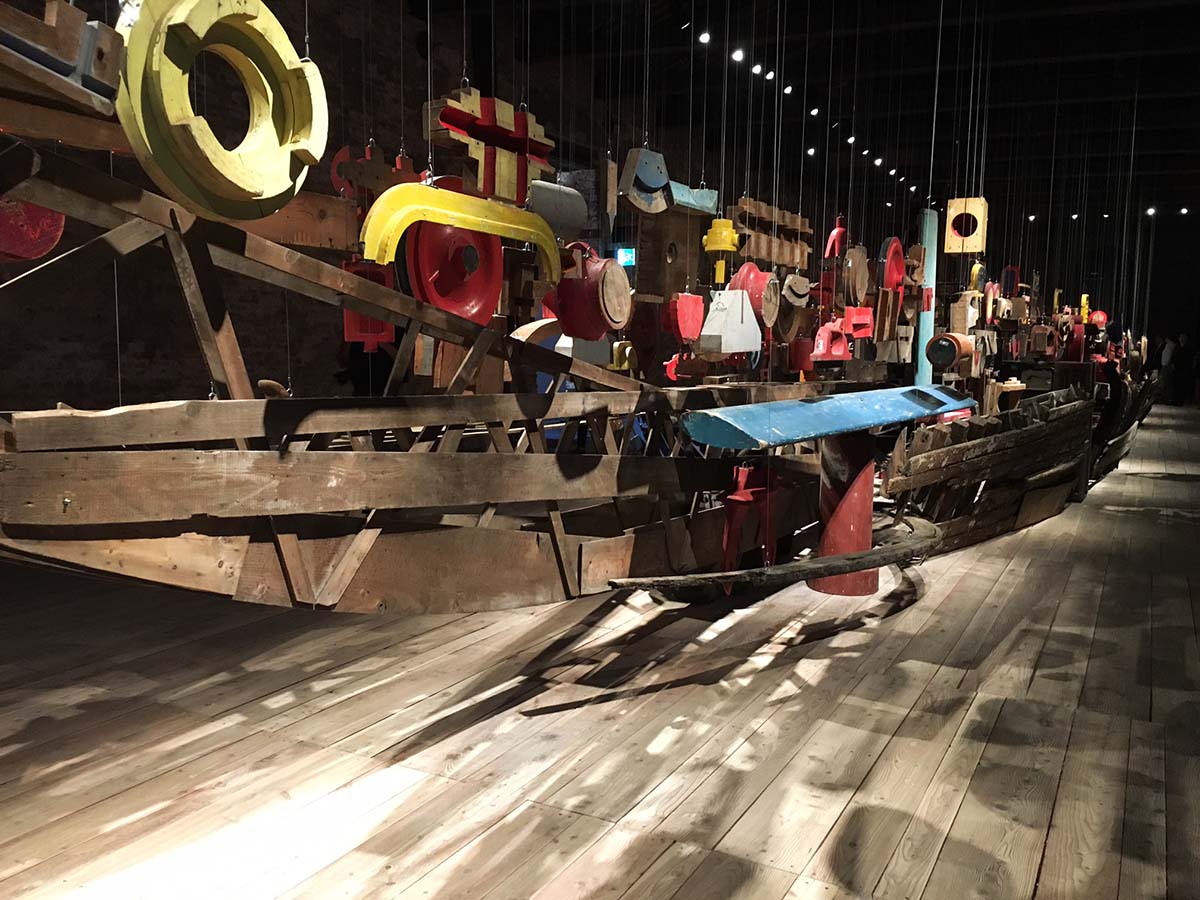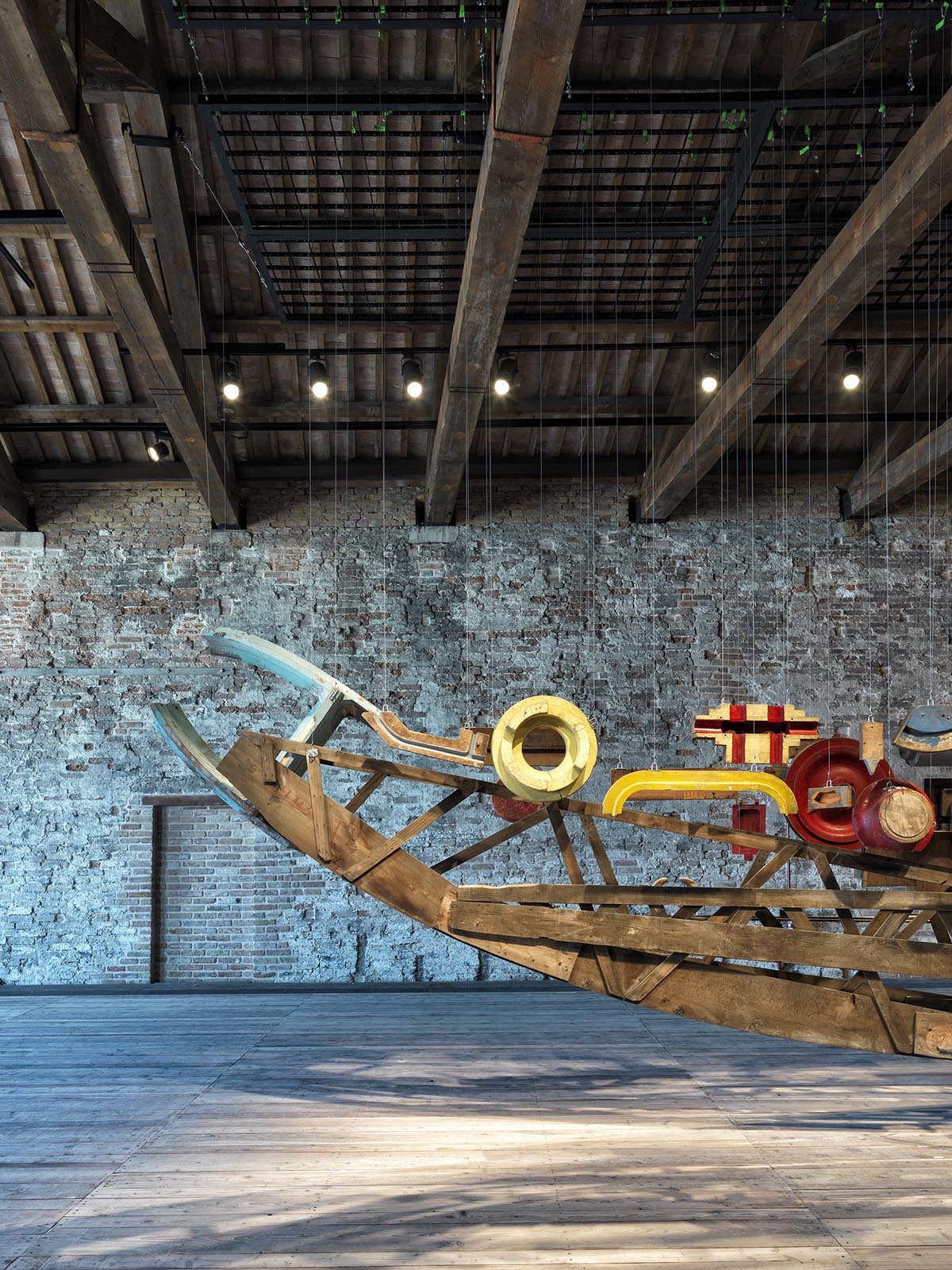Submitted by WA Contents
A mega vessel at the Turkey Pavilion highlights common cultural heritage between Istanbul and Venice
Turkey Architecture News - May 31, 2016 - 16:49 8592 views

The Pavilion of Turkey installs a mega vessel titled 'Darzanà: Two Arsenals, One Vessel' at the 15th International Architecture Exhibition, Venice Architecture Biennale. Curated by Mehmet Kütükçüoğlu and Ertuğ Uçar, founders of Teget, and Feride Çiçekoğlu with curatorial collaborators Cemal Emden and Namık Erkal, the exhibition team of Darzanà consists of Hüner Aldemir, Caner Bilgin, Hande Ciğerli, Gökçen Erkılıç, Nazlı Tümerdem and Yiğit Yalgın. The Pavilion of Turkey, coordinated by the Istanbul Foundation for Culture and Arts (İKSV) and co-sponsored by Schüco Turkey and VitrA, is located at the Sale d’Armi, Arsenale.
Curators Feride Çiçekoğlu, Mehmet Kütükçüoğlu and Ertuğ Uçar explain Darzanà.

Image © WAC
Darzanà is a project about frontier infringement and on hybridity. It challenges the increasing confinement within borders of religion, language, race, nationality, ethnicity and gender. The project highlights the common cultural and architectural heritage shared between the arsenals of Istanbul and Venice. For the Biennale Architettura 2016, a last vessel, Baştarda, has been constructed out of abandoned materials found in the old dockyard of Istanbul and transported to Venice to suggest a new connection in Mediterranean.

Image © WAC
The project title Darzanà means dockyard and it is a hybrid word, like the Turkish word tersane and the Italian word arsenale. These words are derived or distorted from the same root, the Arabic dara’s-sina’a (place of industry). They all originate from the common language that developed in the Mediterranean from the 11th to the 19th century among people such as sailors, travellers, merchants, and warriors.
Known as Lingua Franca, this was a shared language when Mediterranean was the main vessel connecting the surrounding cultures. In the same vein, it is possible to talk of a common architectural language and to define it as Architectura Franca.

Image © WAC
Despite their very different identities and populations today, Venice and Istanbul once both featured considerable dockyards of similar sizes and production. The common core of these dockyards was the shipsheds called “volti” in Italian and “göz” in Turkish. The shipshed is the building block of a shared architectural heritage; its proportions grow out of the dimensions of boats and of common building technologies.
Darzanà links a shipshed of İstanbul with a shipshed of Venice by a vessel. For the project Darzanà, a last vessel, Baştarda was built earlier this year at an abandoned shipshed at the Haliç dockyards in Istanbul.

Image © WAC
Similar to Darzanà, Baştarda is also a hybrid word. Derived from bastardo, Baştarda is a cross between a galley and a galleon and is propelled by oars and sails. As a symbol of Mediterranean hybridity, Baştarda creates a bridge between the two shipyards, one left to rot away in the megacity of Istanbul, the other springing to life only at certain times of the year in the museum-city that is Venice.

Image © Cemal Emden
In Istanbul, Baştarda was constructed beneath a reproduction of the wooden trusses of the hall in Sale d’Armi of Venice shipyard that hosts the Pavilion of Turkey. Measuring 30 metres long and weighing four tons, the vessel was built from more than 500 pieces including seven kilometres of steel cable and abandoned materials found on site including wooden moulds, discarded furniture, signboards and boats.

Image © Cemal Emden
In April, the components were shipped to Sale d’Armi, where Baştarda was re-constructed in May for the Pavilion of Turkey. When La Biennale closes in November 2016, Baştarda will continue her journey and she will eventually become the centrepiece of a museum of arsenal, when the site is opened to public in Istanbul.

Image © Cemal Emden
Darzanà’s main theme raises the question of whether it is possible to transform borders, fronts and other spaces of conflict into thresholds and spaces of consensus. In this vein, Baştarda becomes a vessel of frontier infringement.
She came to Venice, and she will eventually go back to Istanbul, travelling back and forth, just as the languages, the architectural forms, and people of the Mediterranean, have done throughout history. Reporting from Darzanà, one can announce the futility of demarcations on the seas and in between the words.

Image © Cemal Emden
A book has been published to accompany the project Darzanà, which makes use of different archive materials to narrate the history of the dockyards in Haliç from their first creation through to their golden ages right up to recent times when they eventually became unusable.
Edited by Feride Çiçekoğlu and featuring texts by Namık Erkal and Vera Costantini and photographs by Cemal Emden, the book will be available in two editions, English and Turkish, at the opening of the 15th International Architecture Exhibition of La Biennale di Venezia and will later be distributed by Yapı Kredi Publications in selected bookstores. The book and the exhibition’s visual identity are designed by Bülent Erkmen.

Image © Cemal Emden

Image © Cemal Emden

Istanbul Camialtı shipyard 2016. Image © Cemal Emden
Top image © WAC
> via Venice Architecture Biennale
